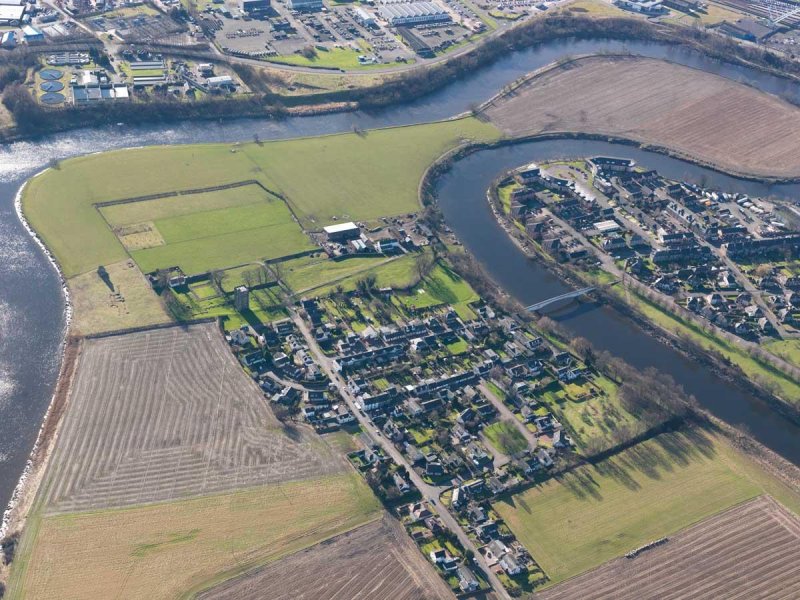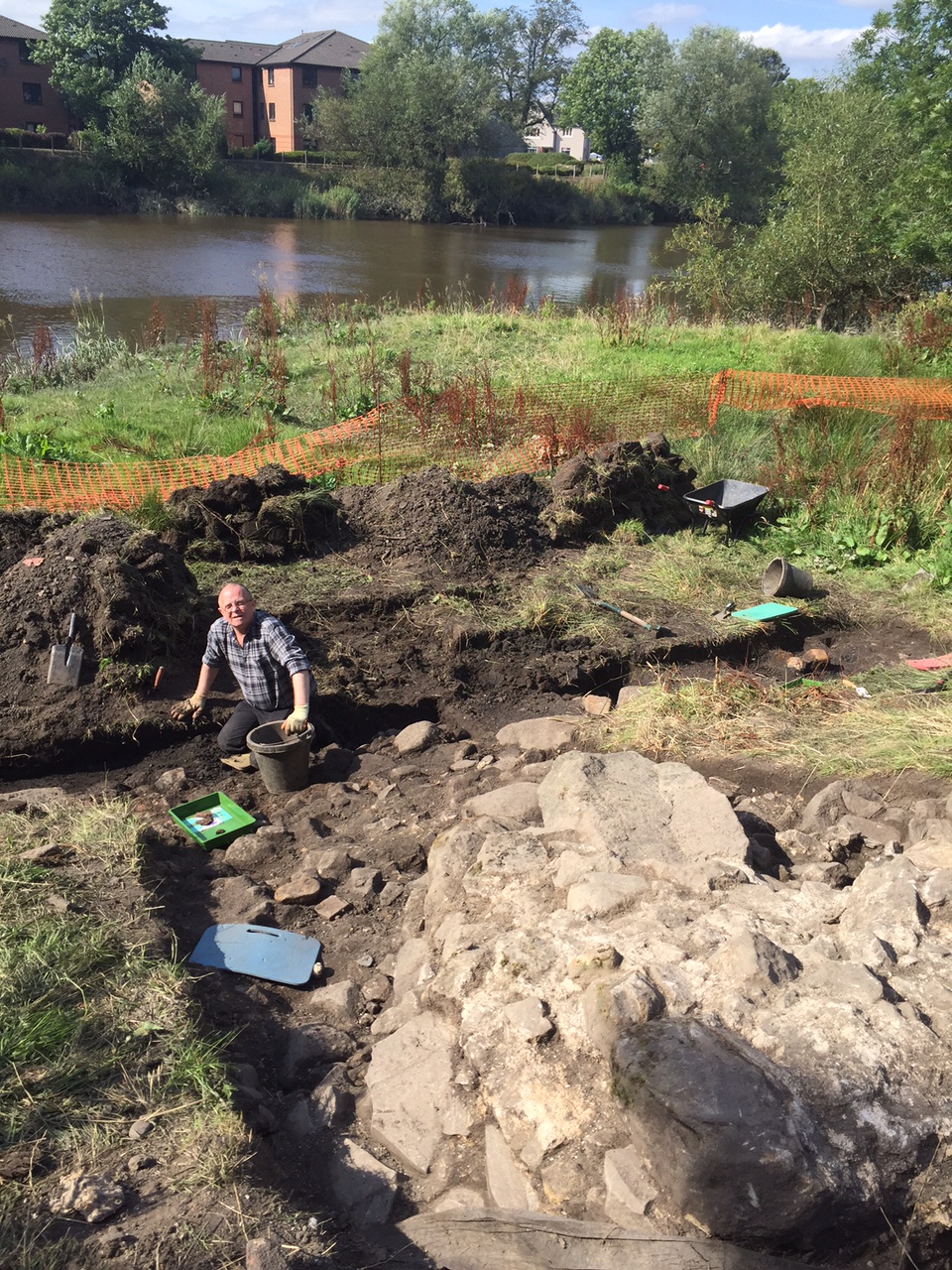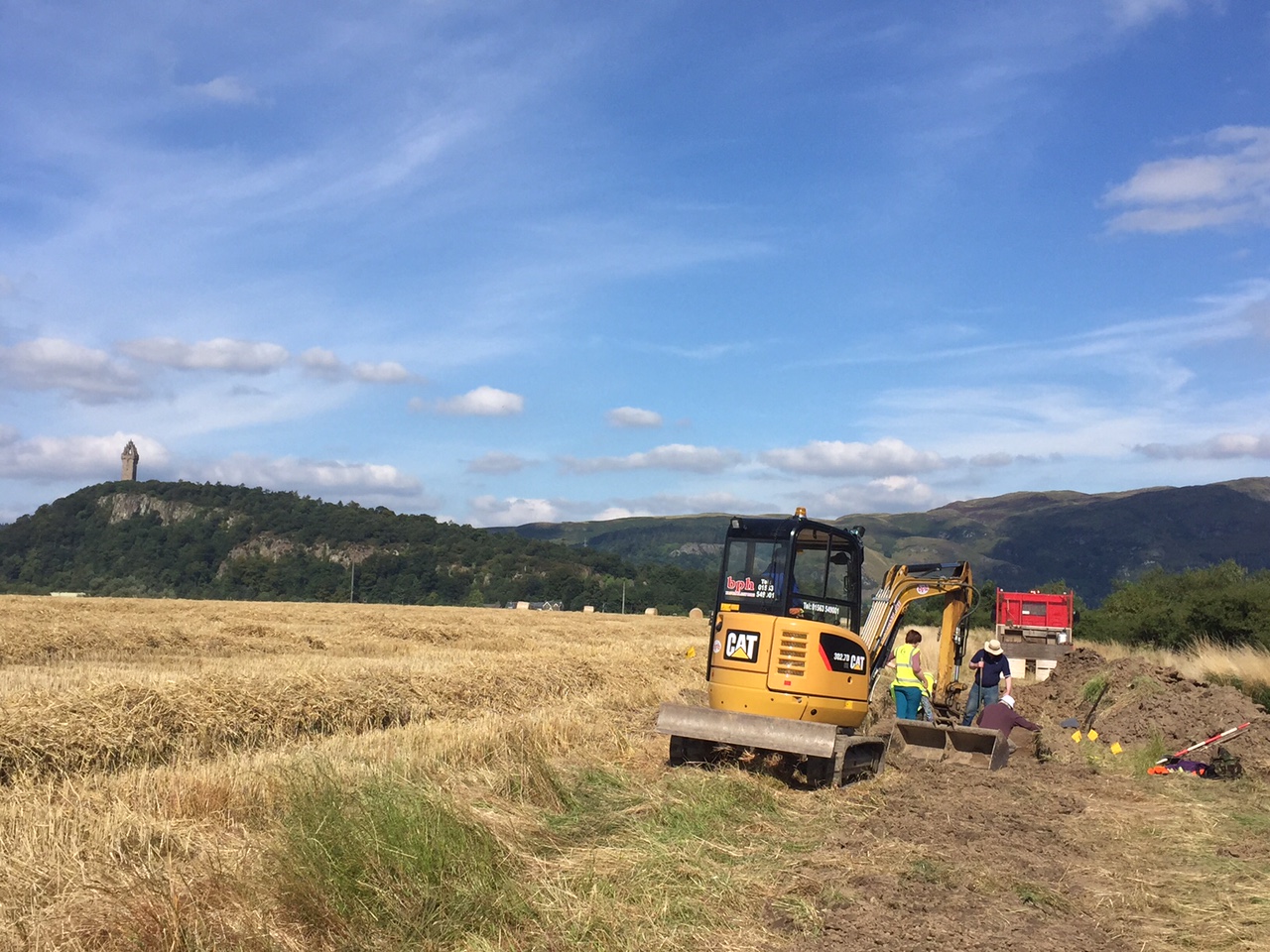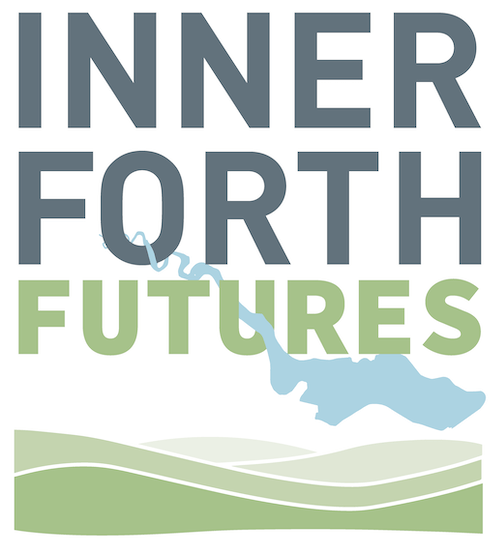Cambuskenneth Watergate and Harbour

The aim of this project was to locate and find out more about the historic watergate and harbour for the Abbey at Cambuskenneth.
This exciting project took place between 7 and 18 September 2015 and saw volunteers and school children working with and learning new skills from professional archaeologists, historians, metal detectorists and geophysicists. The team undertook field-walking, geophysical surveying, metal detecting and excavation of key locations to the north of Cambuskenneth Abbey and around the watergate and harbour area. All artefacts were identified and catalogued. In addition to the 196 days that volunteers contributed, 280 school children and 24 college students helped out too - an incredible number! As well as learning new skills and meeting new people, volunteers and pupils made an invaluable contribution to what we originally knew about the history and heritage of this key site.
The metal-detectorists investigating the ford across the River Forth turned up several items, including coins from the reigns of Robert II (1371-90) and George II (1727-60), a medieval horseshoe fragment, and several lead line and net weights.
The excavations around the watergate and harbour revealed a surprisingly intact medieval stone-built structure on the edge of the Forth.
GUARD Archaeology have complied two reports on the findings: Abbots, Kings and Lost Harbours: Looking for Cambuskenneth Watergate, which covers the dig itself and the initial finds, followed by a final technical report analysing the finds.
What we discovered has also fed into another IFLI project, Forth Crossings, which is investigating historic trade along the Inner Forth.


The dig coincided with the Doors Open Day event at Cambuskenneth Tower on Sunday 13th September. This gave people the chance to explore this fascinating building and see a 1,100-year old log boat recovered from the watergate harbour to the west of the abbey.
Alongside the archaeological investigations was a comprehensive examination of the masons' marks in the bell tower of the abbey. This project led by Moira Greig, who, with the help of a number of other volunteers, recorded a whopping 497 masons' marks belonging to 86 different individuals. Part 1 and Part 2 of the report, along with the survey plans of the tower, are now available to read.
The project was led by Dr Murray Cook, archaeologist for Stirling Council, and Warren Bailie, from GUARD Archaeology. You can listen to Murray discussing the results of the investigation, and read GUARD's article on the site here.
A final project report, giving a summary of all the work undertaken, is available here.

